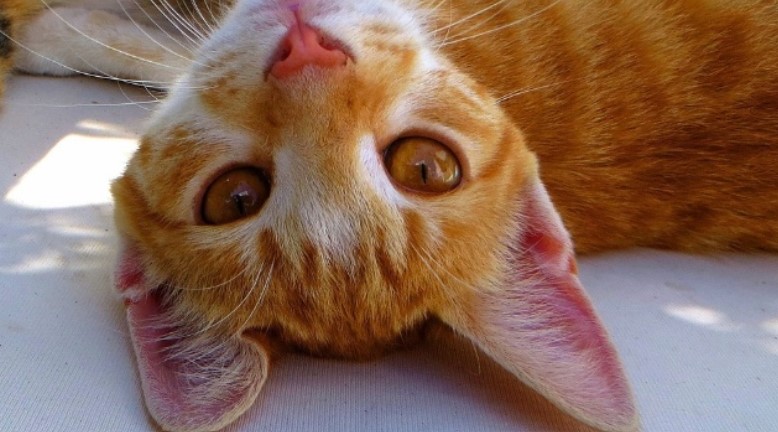The ears of cats are pretty amazing and definitely something you should know more about if you’re a cat owner or considering getting a new feline friend!
The ears of cats are super sensitive, which is why your kitty might constantly be twitching them. This helps them to pick up on even the tiniest sound in their environment.
Aside from being extremely cute, the ears of cats are very special. They have a lot of uses and can be pretty expressive. Here are some little-known facts about cat ears that you may not know!
Top 25 Facts About Cat Ears

Cat ears are amazing. They’re incredibly sensitive and can pick up sounds far beyond what humans can hear. They also have many interesting characteristics that make them stand out from other animals—including dogs!
Here are some interesting facts about cat ears, as well as some common myths surrounding them:
- Facts#1: They Are Among the Most Sensitive Organs in A Cat’s Body – Ears are the only organ that can move independently of other body parts. This is a trait that all cats share, and it’s an adaptation that helps them hear better than other animals.
- Facts#2: The Cat’s Hearing Range Is Octaves Higher than Humans – The range of human hearing is 20 Hz to 20 kHz, and the average cat can hear frequencies up to 65 kHz. This means that a cat can hear sounds that are octaves higher than what humans can hear.
- Facts#3: Cats Can Move Their Ears 180 Degrees – Cats can move their ears independently to better localize sounds in any direction. They also have a wide range of motion for their ears and can rotate them about 180 degrees.
- Facts#4: Cats Have Good Hearing in Both Ears – Cats can also hear equally well in both ears if they have them.
- Facts#5: Cat Ears Are Essential to Communication – Cats use their ears to communicate. They will also turn their ears back when upset or angry, which can be a good indicator of your cat’s mood.
- Facts#6: Cats Have More than 30 Individual Muscles in Their Ears – cats have more than 30 individual muscles in their ears, allowing them to move in various ways.
- Facts#7: Ears Help Cats to Balance and Stay Upright – The ears are also essential for balance. They also allow cats to move their heads in various directions without losing their balance when they jump from one place to another. Ears help cats to balance and stay upright. Cats can also use their ears to communicate with other cats.
- Facts#8: Cat Ears Are Used as Shields – The ears are also used as shields when a cat is in danger or feels threatened by something. Cats’ ears are also essential to their balance, as they help them to stay upright.
- Facts#9: Cats Have a High-Temperature Tolerance – Cats have a higher temperature tolerance than humans, meaning they can withstand hotter temperatures without any problems. Cats have a very advanced sense of balance, thanks in part to the positioning of their ears.
- Facts#10: Cats Have Four Different Types of Ears – Cats have four different types of ears: Pinnae (the outer part) and Cartilaginous Fork, which is made up of two pieces that form a V shape, Ear Muscles.
- Facts#11: No Cat’s Ears Are the Same as Any Other Cat’s – Every cat’s ears are different. This is because some factors can affect how your cat’s ears look, including their age, breed, and health.
- Facts#12: The Inside of A Cat’s Ear Is Pink, Not White Like Its Fur – The inside of a cat’s ear is pink, not white like its fur. This helps to protect the delicate tissue inside from damage.
- Facts#13: Cats Have an Inbuilt Radar System – Cats have an inbuilt radar system that allows them to find their way home even if they don’t know where it is.
- Facts#14: Cats Are Capable of Hearing Sounds that Are Far Beyond Our Own Range of Hearing – Cats can hear sounds up to four times higher than what we can listen to, which means they’re also able to hear much lower frequencies. They have an extra inner ear bone called the cochlea, which allows them to pick up on these sounds.
- Facts#15: A Cat’s Ear Is Like an Air-Conditioning System for Its Brain – Cats have an extra inner ear bone called the cochlea. This means they can pick up on frequencies far beyond what we can hear.
- Facts#16: Cat Ears Are Pretty Darn Amazing! – Cats have an extra inner ear bone called the cochlea, which allows them to pick up on these sounds.
- Facts#17: Cats Have Powerful Ear Muscles to Help Them Fight Off Infections and Foreign Bodies that Get Into Their Ears – Cats use their powerful ear muscles to help fight off infections and foreign bodies that get into their ears. They have an extra inner ear bone called the cochlea, which allows them to pick up on these sounds.
- Facts#18: Ear Mites in Cats Are Common – Ear mites are tiny parasites that live in the ear canals of cats. They feed on ear wax, skin, and tissue debris that accumulates in the ears.
- Facts#19: Not All Cat Ear Problems Can Be Treated at Home – If your cat has a severe ear infection that causes fluid drainage, you should take him to the vet. The vet will clean out your cat’s ears and prescribe antibiotics to clear up any infection present.
- Facts#20: A Cat’s Ears Can Tell You a Lot About Its Personality, Health, and Feelings – A cat’s ears can tell a lot about its personality, health, and feelings. If your cat has an ear infection, it may be scratching its ears or shaking its head excessively. This is often a sign of pain or discomfort. If this happens, you should take your cat to the vet so that he can properly diagnose the problem and treat it with medication.
- Facts#21: Lots of Cats Love a Good Ear Scratch – A cat’s ears are very sensitive, so if you scratch them, be gentle. You may want to gently rub behind the ears and then move down around the base of the ear. Do not pull on your kitty’s ear or tug too hard, as this can cause damage or pain.
- Facts#22: Cats Tilt Their Ears to Help Them Hear Better – The exact reason cats tilt their ears is unknown. It could be that they’re trying to hear better or just making sure no flies are buzzing around near their eardrums.
- Facts#23: Some Cats’ Ears Wiggle when They’re Happy and Relaxed – this is called “ear wiggling,” and it’s more common in young cats. The exact reason cats tilt their ears to the side isn’t known, but some experts believe it happens when they’re trying to hear better. They might also be checking for flies buzzing around their eardrums.
- Facts#24: Cats’ Ears Can Tell You a Lot About What They’re Feeling – Cats’ ears can tell a lot about their feelings. If your cat’s ears are flat against its head, that means they’re feeling scared or anxious. If only one ear is relaxed, the other might be alert and listen for something. You’ll also see this when cats are hunting or stalking prey.
- Facts#25: The Ear Canal of Cats Is Also Very Long Compared to Other Animals—it’s about one inch long! This helps them hear better than most other animals.
Conclusion
There are many things that you can do to help your cat feel safe and happy at home. We hope you find this list of fun facts about your cat’s ears and other feline behaviors interesting. If you’re looking for more information on the cat facts topic. We recommend reading through this list—it’s a great resource!
FAQ- Amazing Facts About Cat Ears
1. What Are Cat Ears?
Cat ears are a type of cosplay accessory that is shaped like cat ears. They can be used for a variety of costumes, including anime characters or maids. They come in many different colors and sizes to suit your needs.
2. How Many Muscles Are in A Cat’s Ear?
There are approximately 20 muscles in a cat’s ear, which allows them to move their ears as they please. The muscles can help cats hear better by changing the shape of their ears, allowing them to focus on specific sounds or frequencies.
3. What Is Special About Cats Ears?
Cats are a source of joy and entertainment because they are so fun to be around. They love to play, especially with their owners. A cat’s ears can be an important part of communication between you and your kitty. They will often turn their heads when they hear something interesting or exciting, such as a squirrel outside the window or even an approaching person.
4. How Powerful Cat Ears?
Cats have a very powerful hearing. They can hear sounds that are much higher pitched than humans can, and they can hear frequencies five times greater than us.
5. Are Cats’ Ears Sensitive?
Yes, cats’ ears are sensitive. In fact, a cat’s hearing is much more acute than a human’s and can pick up sounds that we can’t even hear. This is because their middle ear has an extra bone (the malleus) that helps amplify sound.




